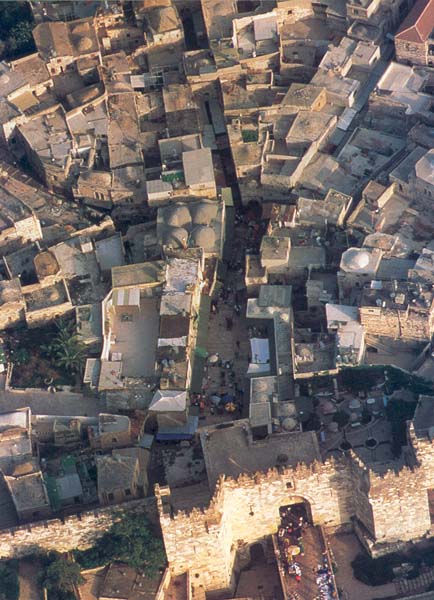Image Details

Marcello Bertinetti/Edizioni White Star
The Damascus Gate, constructed by Suleiman the Magnificent in the 16th century, is the most elaborate entrance to Jerusalem’s Old City today. Directly beneath the gate, archaeologists discovered the remains of the northern entrance to Aelia Capitolina, consisting of three arched gateways flanked by two massive towers (see drawing). The smaller, left-hand (eastern) archway has survived intact and is fully visible in this bird’s-eye view, one story beneath the Damascus Gate.
The Arabic name for the entranceway, Bab el-Amud, or the Gate of the Column, preserves the memory of a column, bearing a larger-than-life statue of Hadrian, that stood in the center of a courtyard inside the gateway (see drawing). The route of the Roman Cardo is retained in the line of the modern road that veers to the right (west) in this photo.
